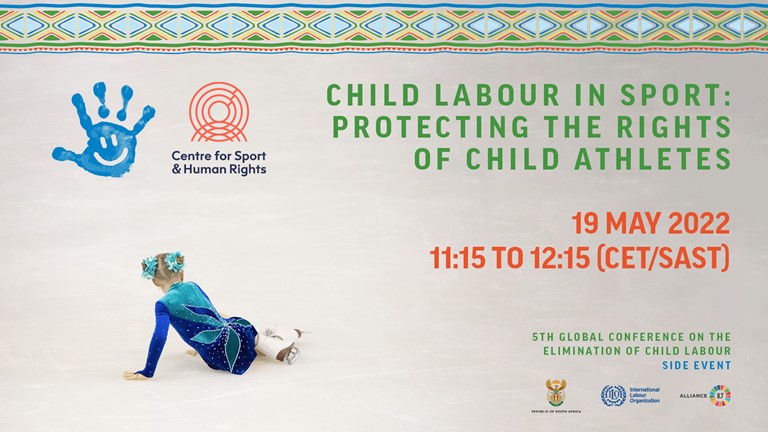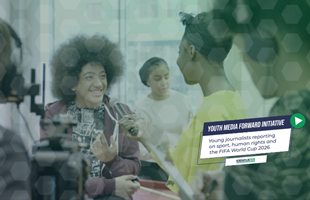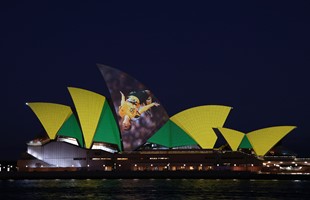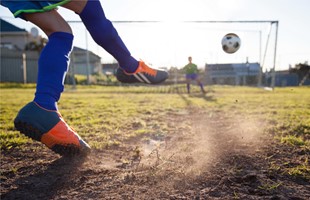Past Event: Child Labour in Sport: Protecting the Rights of Child Athletes
Past Event
19 May 2022 11:15am to 19 May 2022 12:15pm (CET)
Online
Please note correct time for this event: 11:15 SAST/Durban Time, 11:15 CET, 10:15am BST and 5:15 am EDT/New York
Featuring
- Dr. Decius Chipande, Moderator
Coordinator of the African Union Sports Council - Mary Harvey, Welcome
Chief Executive, Centre for Sport and Human Rights - Prof. Jaap Doek – Presentation on Project Steering Committee and Methodology
Chair of the Child Labour in Sport Steering Committee
Former Chair of the UN Committee on the Rights of the Child - Benjamin Smith – Presentation on Project Consultations
Sr. Officer on Child Labour, International Labour Organisation
Panel – Presentation on Findings and Recommendations
- Yoshie Noguchi
Retired ILO Officer, Child Labour Expert - Dr. Paulo David
UN Office of the High Commissioner for Human Rights
Author of Book: Human Rights in Youth Sport: A Critical Review of Children's Rights in Competitive Sport - Andrea Florence
Acting Director of the Sport and Rights Alliance - Dr. Michael Bergeron
Clinical and Scientific Advisor in Sport Sciences and Medicine and Performance Health
Additional Information
For more than four decades there have been calls to examine the state of children’s rights in sport who are placed in situations which, when applying definitions from international treaties, may be characterised as child labour. Until recently, these calls have received little or no attention.
Points of Consensus that were adopted at the 1st ILO Global Dialogue Forum on Decent Work in the World of Sport held on 20-22 January 2020 underscored that:
Children and young athletes require special protection from abuse and from injuries and illness resulting from sport, including protection of mental well-being. Such protection is especially important for minors in situations away from their home. The Worst Forms of Child Labour Convention, 1999 (No. 182) is particularly relevant in this regard.
and called for:
…safeguarding the rights of children and young people to participate in sport in conditions of freedom, dignity and safety, including through the integration of dedicated policies, programmes and training in keeping with the best interests of the child and internationally recognized standards.
THE PROBLEM
Across the globe, adults who were child athletes have begun to raise their voices, recalling the situations and conditions they have encountered as young persons in sport including: excessive hours of intensive training (for example, a child at age six required to train 20 hours per week), excessive repeated training that caused chronic and/or serious injuries, trafficking and sale in and through sport, loss of education and balanced social development, and being subjected to intimidation, harassment, violence, abuse, neglect, exploitation, avoidable injuries and doping.
Such situations may be considered “hazardous work” or other forms of child labour, as defined in the ILO Convention 182 which has been ratified by all ILO Member States.
SOLUTION
In response, the Centre for Sport and Human Rights (CSHR), in collaboration with the ILO, undertook the process of preparing a White Paper on this situation. The primary aim is directed to raising awareness of how child labour in sport leads to rights being compromised and violated, and providing guidance to concerned State entities, sport organisations, and other stakeholders about how to prevent and respond to intimidation, harassment, violence, abuse, neglect, exploitation, injuries and doping of children in the context of sport.
The process, which commenced late in 2021, is guided by a Steering Committee of 13 eminent experts from across the globe. The process includes an extensive review of relevant literatures and 25 consultations, which collected and analysed input from a wide range of experts and stakeholders. These included international sport federations and organisations; athlete representative groups and unions; inter-governmental regional entities; child labour and child rights experts, including current and past members of the UN Committee on the Rights of the Child, UN agencies and UN Special Rapporteurs, coaches, sports medicine physicians, the entertainment industry, academics, agencies committed to addressing child trafficking in and through sport, sport academies, and several prominent national entities that are taking steps to bring change to the situation at the levels of both policy and practice.
During the event, the Project Steering Committee will launch the White Paper’s key findings and recommendations together with a call for responses, particularly from the world of sport and governments.




